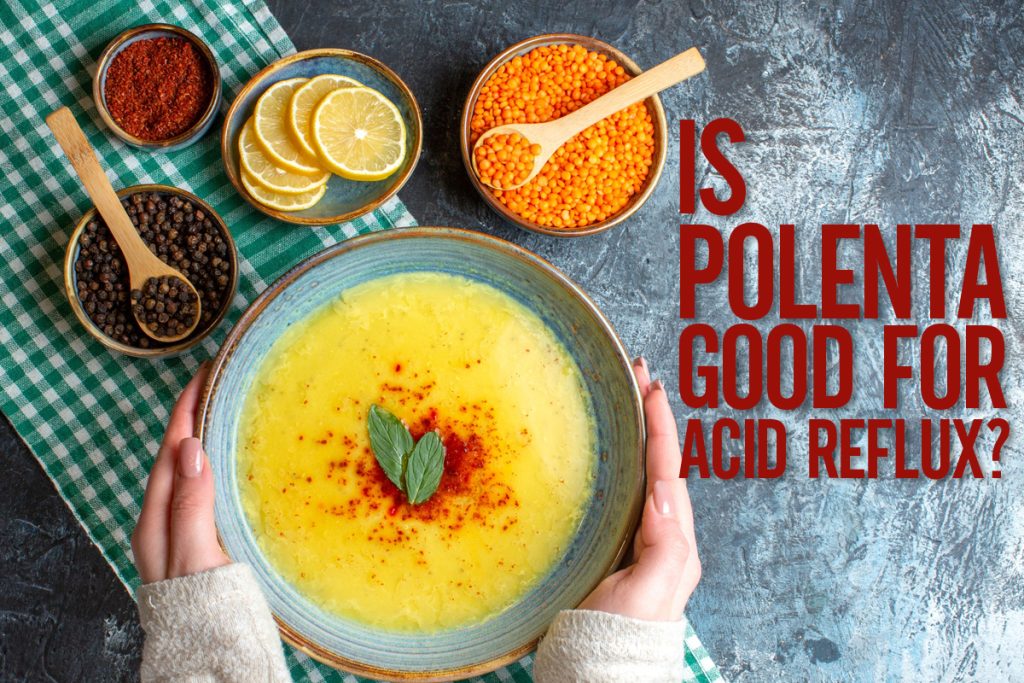Acid reflux, also known as gastroesophageal reflux disease (GERD), is a common digestive issue that affects millions of people worldwide. It occurs when stomach acid flows back into the esophagus, causing discomfort, heartburn, and regurgitation. Managing acid reflux often requires dietary modifications, and choosing the right foods can make a significant difference in symptom control. One food that often comes up in discussions about acid reflux-friendly diets is polenta. But is polenta good for acid reflux? Let’s explore its benefits, potential concerns, and how it fits into a reflux-friendly diet.
What is Polenta?
Polenta is a dish made from boiled cornmeal, originating from Italy. It can be served in various forms, such as soft and creamy or firm and grilled. Due to its mild taste and versatility, polenta is a staple in many diets. Additionally, it is naturally gluten-free, making it a suitable choice for individuals with gluten sensitivities or celiac disease.
Low in Fat
High-fat foods can trigger acid reflux by relaxing the lower esophageal sphincter (LES), allowing stomach acid to escape into the esophagus. Polenta is naturally low in fat, reducing the risk of reflux symptoms. Low-fat foods help keep the LES tight and prevent acid from backing up into the esophagus.
Gluten-Free
Many individuals with acid reflux also have gluten sensitivities, which can worsen symptoms. Since polenta is naturally gluten-free, it is a safe option for those looking to avoid gluten-containing grains like wheat, barley, and rye. Consuming gluten-free foods can sometimes help reduce bloating and indigestion, further minimizing reflux triggers.
Mild and Non-Acidic
Acidic foods like tomatoes, citrus fruits, and vinegar can exacerbate acid reflux by increasing stomach acid production. Polenta, however, is a neutral food that does not contribute to acidity. Its gentle nature makes it a great choice for individuals who need to avoid highly acidic and irritating foods.
High in Fiber
Fiber aids digestion by promoting regular bowel movements and helping regulate stomach emptying, which can prevent acid buildup and reflux episodes. A fiber-rich diet helps absorb excess stomach acid and reduces pressure on the LES, preventing acid reflux symptoms from worsening.
Complex Carbohydrates
Polenta is a good source of complex carbohydrates, which provide long-lasting energy and help maintain stable blood sugar levels. This can be beneficial for acid reflux sufferers, as spikes in blood sugar can sometimes contribute to digestive discomfort. Unlike refined carbohydrates, complex carbs digest more slowly, preventing sudden changes in stomach acid production.
Potential Concerns When Eating Polenta for Acid Reflux
While polenta is generally a good option for acid reflux sufferers, there are a few considerations to keep in mind:
Preparation Method Matters
Avoid frying polenta in oil or butter, as high-fat foods can trigger reflux. Instead, opt for boiled, baked, or grilled polenta. Cooking methods that involve excessive fats can relax the lower esophageal sphincter, leading to increased reflux symptoms.
Watch Your Toppings
Acidic, spicy, or fatty toppings, such as tomato sauce, cheese, and chili flakes, can aggravate reflux. These ingredients can stimulate acid production and irritate the esophagus. Instead, pair polenta with alkaline vegetables like zucchini, spinach, or carrots, which help balance stomach acidity and support digestion.
Portion Control
Eating large meals can increase the likelihood of acid reflux. Overeating puts pressure on the stomach, forcing acid to move upward into the esophagus. Stick to moderate portion sizes and eat smaller, frequent meals throughout the day to reduce reflux episodes. Consuming polenta in reasonable amounts can help maintain digestive comfort without triggering symptoms.
How to Eat Polenta for Acid Reflux
To maximize the benefits of polenta while minimizing acid reflux symptoms, consider the following tips:
Pair with Alkaline Foods
Eating polenta with vegetables such as kale, broccoli, or green beans can help neutralize stomach acid. These vegetables have an alkalizing effect, which can counteract acid buildup and reduce reflux discomfort.
Use Healthy Cooking Methods
Opt for steaming, boiling, or baking polenta rather than frying it. Avoid adding excessive oil, butter, or cheese, as these can relax the lower esophageal sphincter and trigger reflux symptoms.
Avoid Acidic and Spicy Ingredients
Stay away from citrus, tomatoes, hot peppers, and vinegar-based dressings. These foods can increase stomach acidity and worsen reflux symptoms. Instead, season polenta with mild herbs like basil or oregano to enhance flavor without irritation.
Consume in Moderation
Eating smaller, frequent meals rather than large portions can help prevent acid reflux episodes. Large meals put pressure on the stomach, leading to acid reflux. Controlling portion sizes can aid digestion and minimize discomfort.
Conclusion
Polenta is a reflux-friendly food due to its mild nature, low-fat content, and ease of digestion. If you suffer from acid reflux, incorporating polenta into your diet can be a great way to enjoy a satisfying meal without aggravating your symptoms. However, it is essential to prepare it correctly and pair it with non-acidic, low-fat ingredients to maximize its benefits.
For more health-related insights, check out:
Visit CyberMart.com for high-quality polenta and other health-conscious products!




Pingback: Are Honey Ohs Gluten Free? - Blog By CyberMart USA
Pingback: Best Coffee For Belly Fat Loss - Blog By CyberMart USA